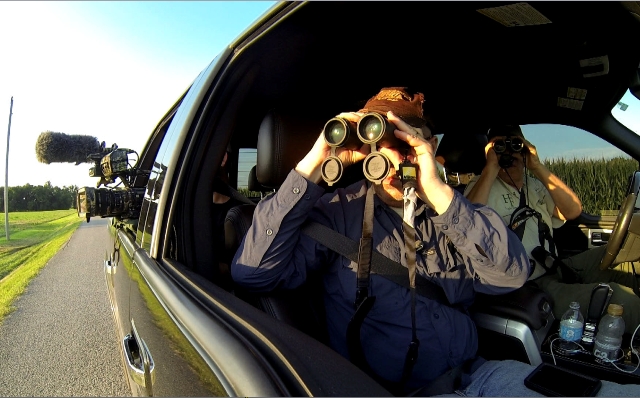Scouting For Early Season Hunts!
Filed under: Deer Hunting, Hunting Blog
Many hunters, including myself, are “scouting” for stand locations this time of year! However, we don’t and shouldn’t always have to spend days busting through the woods to find stand locations.
If the goal is to find and harvest a mature buck then the least disturbance we can cause while scouting and still obtain useful information is better. Mature deer have some level of memory. That can serve hunters well if deer use their memory to return to the same food source, bedding area, or water source.
However, a deer’s memory can also limit the success of hunters if deer avoid areas due to associating (remembering) that area with fear. So, I prefer scouting using Minimal Disturbance Entry (MDE).
In areas where soybeans and other crops that deer prefer are grown, scouting may be as simple as cruising the roads around the area where you hunt. Often mature bucks can be seen foraging in soybean fields just before dark. Watching bucks this way is fun, but is only the first step in this scouting technique.
Once bucks are located and you’ve confirmed that they are returning to the same field it’s time to use the best scouting tool – your brain!! Rather than go into that area and risk putting the bucks on high alert, consider where the closest bedding area is. Is there a bottleneck such as a narrow strip of woods, pinch point between cover and a river, fence gap, etc., between where the bucks are feeding and where you believe they are bedding?
If so, then consider if you can approach that area to hunt without alerting the bucks to your presence. If there is then you’ve found a great stand location! Remember that bucks often change patterns and use other parts of their home range during the next few weeks as the soybean forage begins turning yellow and the bucks’ hormones change. Once you’ve located a buck this time of year, careful scouting and stand placement can lead to filling a buck tag within the first few days of the season!
Just before and soon after bucks shed velvet they are usually on a food/cover pattern. Locating the preferred food and cover – and just as importantly, a stand location in between that allows the hunter to approach, hunt, and exit without alerting deer — is a great scouting technique!
Growing and hunting deer together,
Grant




